本文由 Kazuyo Sejima & Associates 授权mooool发表,欢迎转发,禁止以mooool编辑版本转载。
Thanks Kazuyo Sejima & Associates for authorizing the publication of the project on mooool, Text description provided by Kazuyo Sejima & Associates.
Kazuyo Sejima:首先,我认为一个具有历史底蕴的场所是具有吸引力的。我想深入研究和了解过去,然后建设更美好的未来。这是一个能使人同时感受到过去、现在和未来的地方。
Kazuyo Sejima: To begin with, I thought that a site with a historic background would be compelling. I wanted to study and know the past in depth, to then face and build the future. It was an occasion for the past and the present, but also the future, to be connected.
▼“水明”鸟瞰 Aerial view
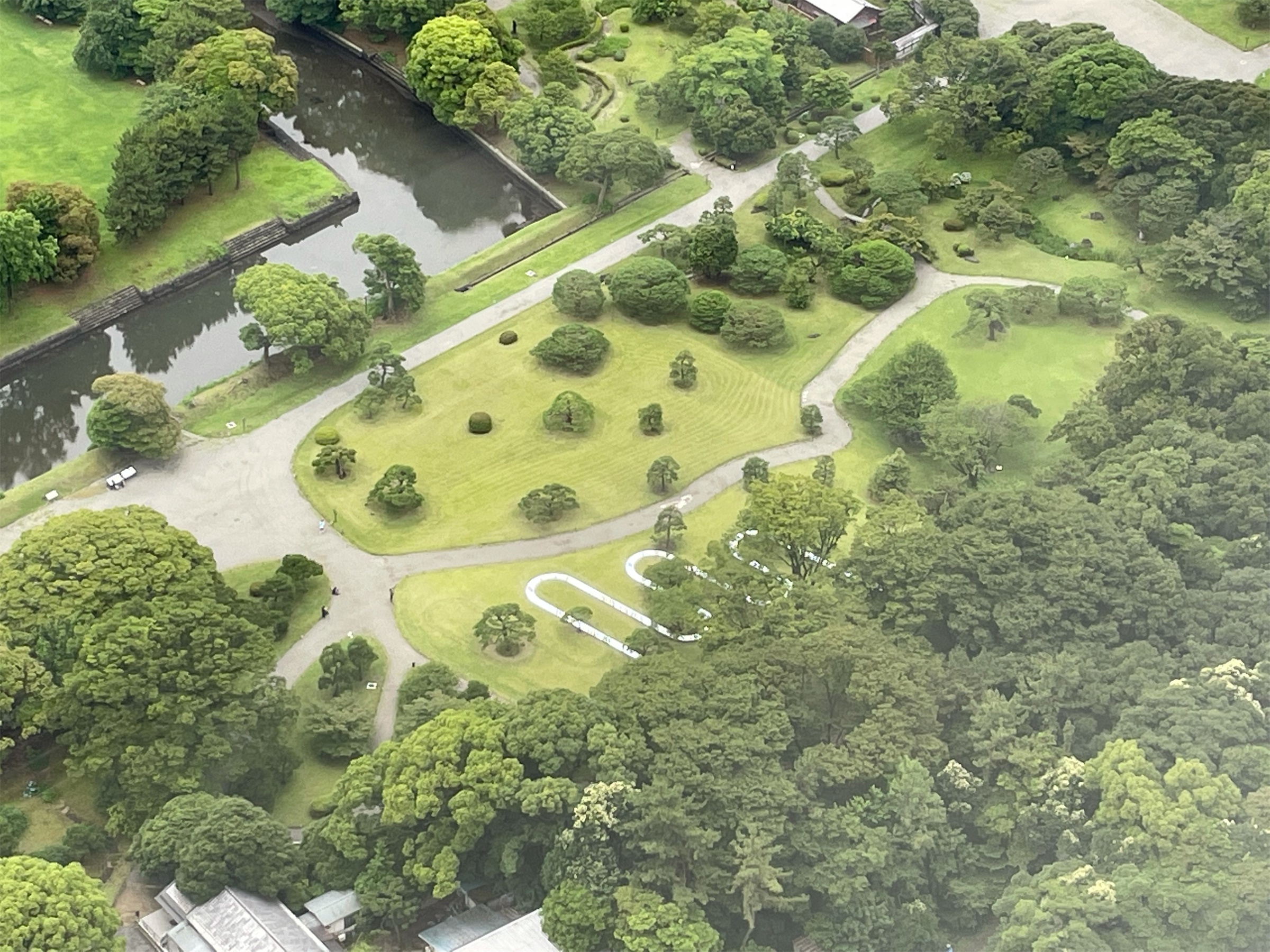
滨离宫庭园是江户时代的大名庭园,江户幕府历代将军多次对其进行美化和修葺。如今,从庭园可以看到新桥、汐留这些摩天大楼如背景般矗立着。在这里,我可以同时感受到东京的两面——历史性和现代感。我不禁联想到东京城市版图的扩张,同时也感受到它曾作为幕府猎鹰场的乡村之景。我们计划在建于明治时代初期的“延辽馆”展开设计,这里曾是招待宾客的场所。
The Hamarikyu Garden is a daimyo garden of the Edo period. It has been landscaped and renovated many times by successive shoguns of the Edo shogunate. Nowadays, from the garden, you can see the skyscrapers of Shimbashi and Shiodome standing in the background. It’s a site where I could interact with two dimensions of Tokyo: both historical and modern. I think about the expansion of the city of Tokyo while I sense the countryside it used to be – falconry grounds for the shogunate. Within the park we chose the site of the guesthouse “Enryokan”, constructed in the early Meiji era. It is a place of hospitality.
▼摩天大楼与滨离宫庭园 The skyscrapers and Hamarikyu Garden
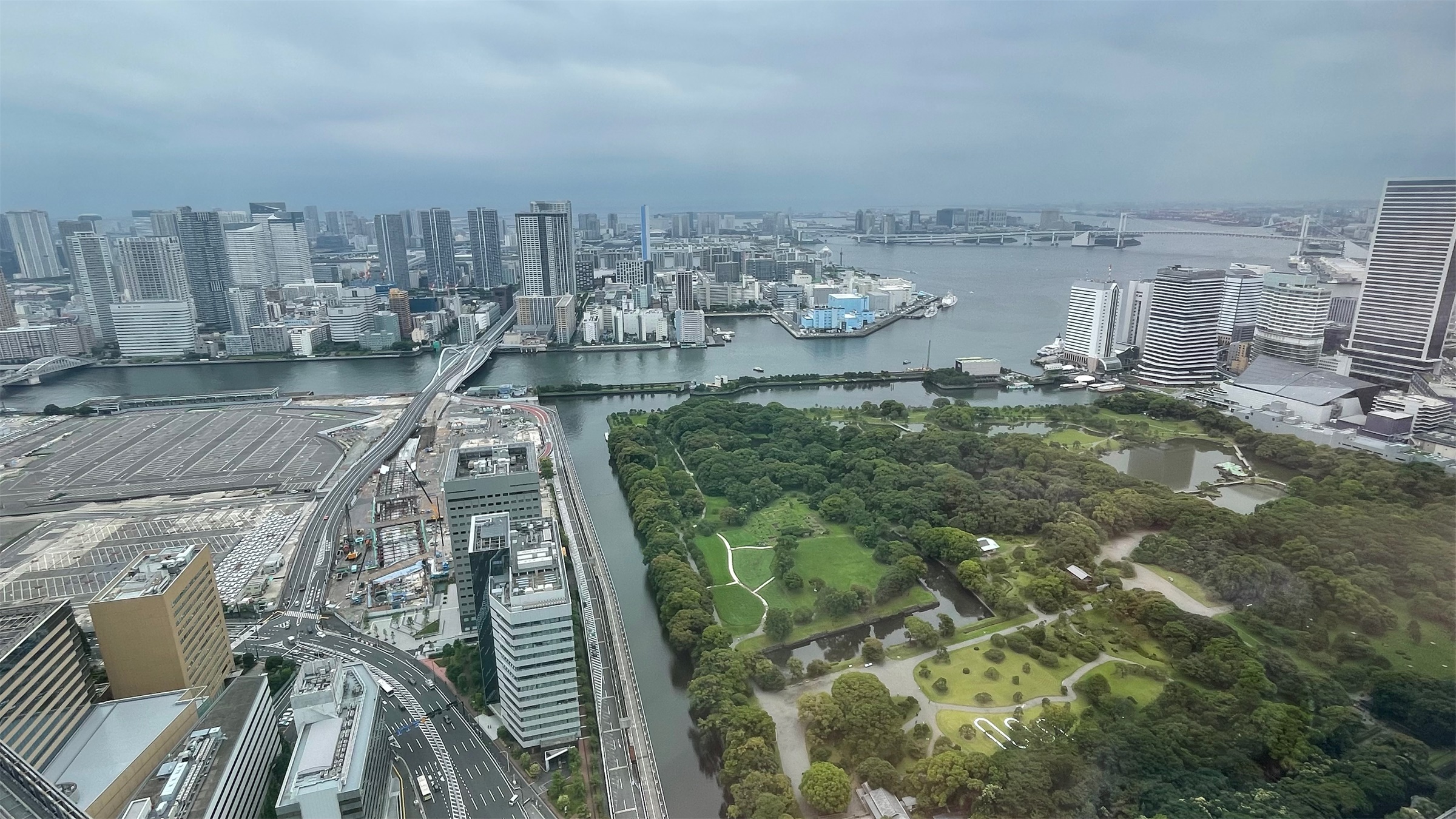
滨离宫是一个水源丰富的庭园,有着各式各样可亲近的水景,如潮池和两个猎鸭池。我想将具有“现代感”的水引入景观,所以采用了“曲水”kyokusui,这是平安时代寝殿造庭院 (Shinden-zukuri garden) 中的一条水道。
The Hamarikyu Garden is already a park that coexists with water: there are many ways to enjoy water within the park, such as ponds made of seawater and two duck fields. In this landscape, I wanted to introduce water in a way that reflects present times, but keeping in mind the kyokusui (a waterway in the Shinden-zukuri garden of the Heian period).
▼概念草图 Concept Sketch

水是不可或缺的生命元素,流水的图案常见于和服设计中,代表了不同的寓意,比如“洗去苦痛与灾难”、“流水干净而纯粹”、“净化与防火”。
Water is an irreplaceable element in life. The patterns of running water, often used in Kimono, have different symbolic meanings, such as “washing away suffering and disasters”, “flowing water is clean and pure”, and “purification and protection from fire”.
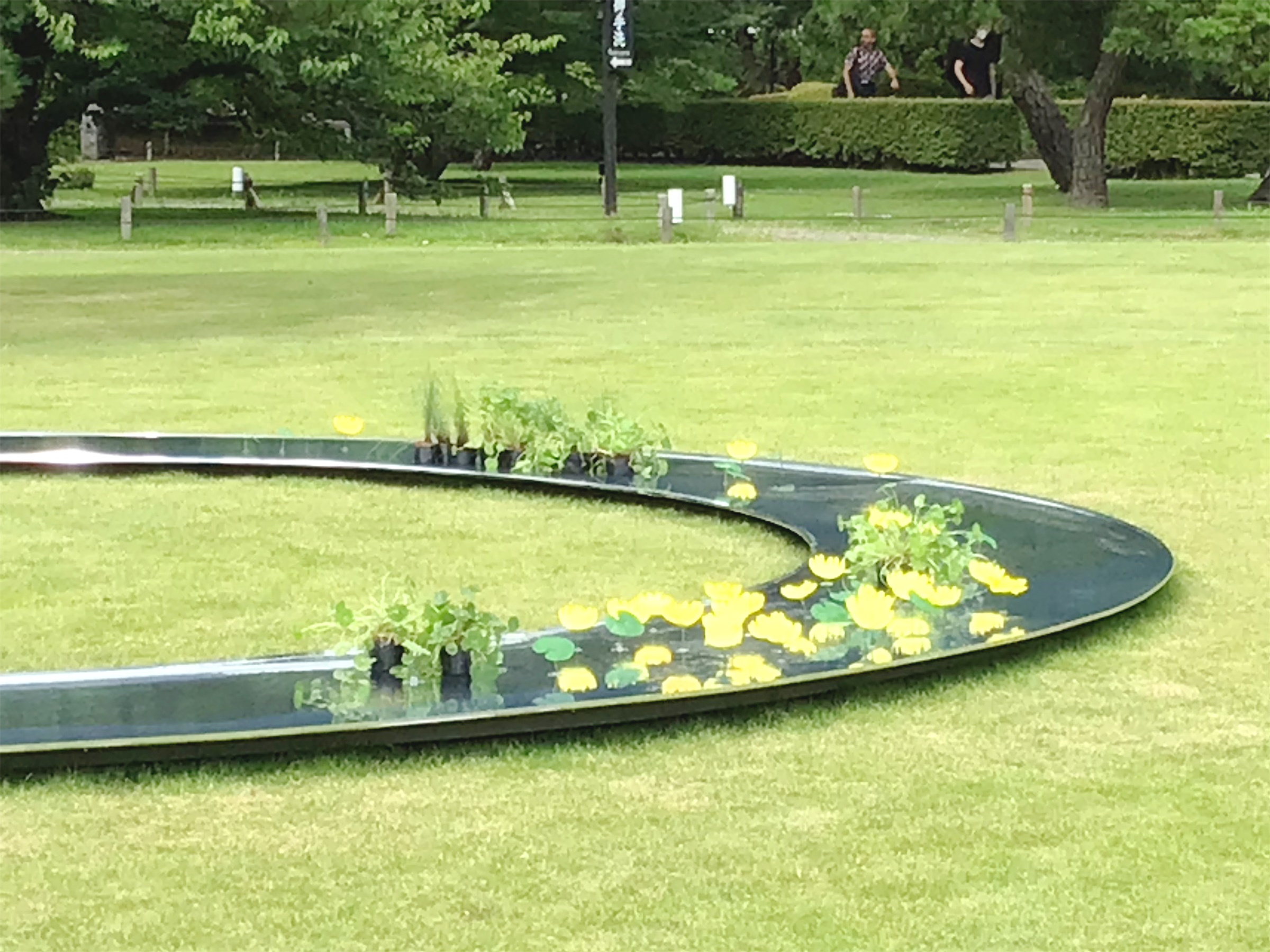
就装置本身而言,从远处看,草坪上弯曲的水似乎是静止的,但当我们走近仔细观察,会发现它正静静地流淌着。缓慢的流水既是静置的,也是不断变化的,它象征着过去、现在和未来。
As for the installation itself, the stream of water on the grass seems to be stationary when viewed from a distance, but as one approaches it, it is possible to see that it is actually flowing quietly. By appearing to be simultaneously fixed and constantly changing, the flow of water represents the past, the present and the future.
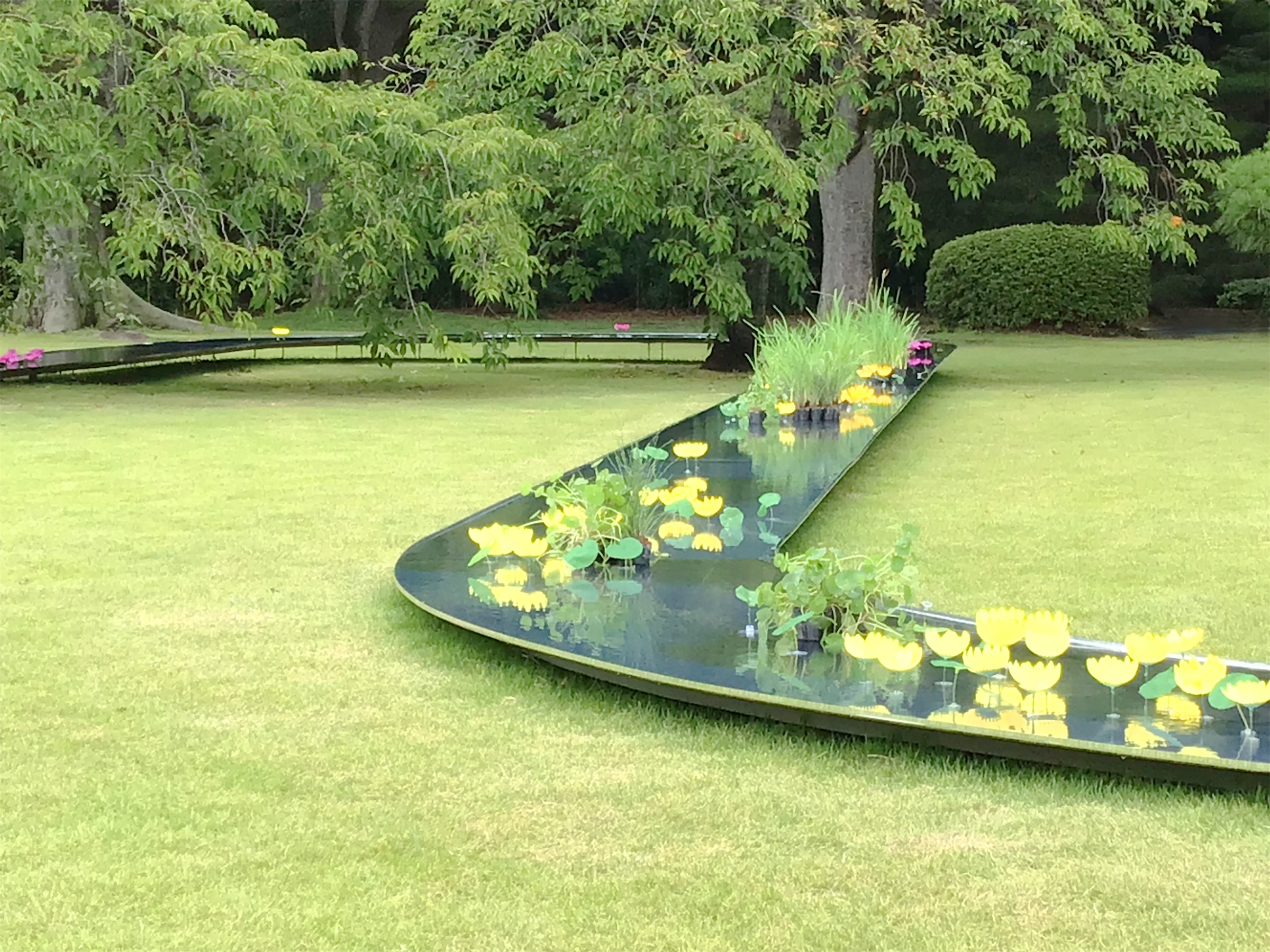
镜面水道中的浅水倒映着松、梅等树木和周围的建筑,在阳光下显得熠熠生辉。“水明”一词即是指:清澈的水在日月的照耀下闪烁着美丽的光辉。我希望人们既能通过这片不断变化的水面追忆东京的过去,也能想象城市光明的未来。
The shallow water in the mirrored waterway shines brightly. It reflects surrounding pine and plum trees, as well as neighbouring buildings. The title “Suimei” is a word that signifies how limpid water shines beautifully in the light of the sun and the moon. My hope is to be able to imagine a bright future through this surface of water, one that reflects the past of Tokyo while also continuously shifting.
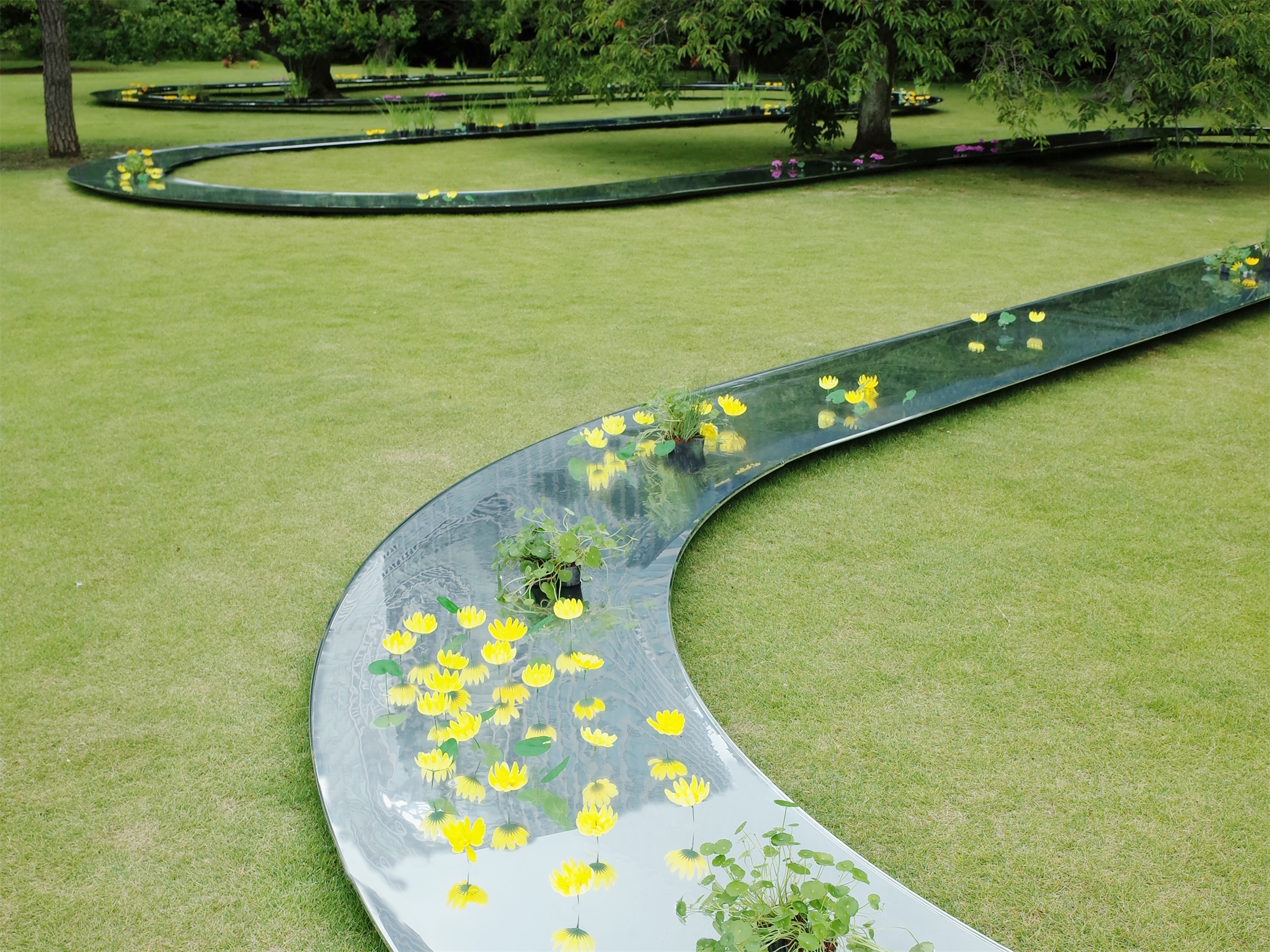
正如鸭长明在《方丈记》的序言写道:“逝川流水不绝,而水非原模样。滞隅水浮且消且结,那曾有久伫之例。世上的人和居也如此。”(译文引自《方丈记·徒然草》鸭长明、吉田兼好[日本] 著,李均洋 译)
I would like to portray the scenery as Kamo no Chomei wrote in the prelude of his book “Hojoki,” “The flow of the river is ceaseless; and its water is never the same. The foam that floats in the pools now gathering, now vanishing never lasts long. So it is with man and all his dwelling places on this earth.”
项目名称:“东京2021展馆计划·水明”
项目地点:日本东京
设计公司:妹岛和世建筑设计事务所
完整项目信息:水明 / 妹岛和世, “东京2021展馆计划·水明”
“东京2021展馆计划”由东京都政府、东京艺术委员会(东京都历史文化基金会)和“东京2021展馆计划”执行委员会组织,作为“Tokyo Tokyo FESTIVAL Special 13”计划中的一部分。
展出日期:2021年7月1日-9月5日
企划制作:WATARI-UM、The Watari Museum of Contemporary Art
Project Name: Pavilion Tokyo 2021 “Suimei”
Project Location: Tokyo, Japan
Design Firm: Kazuyo Sejima & Associates
Complete project information: Suimei / Kazuyo Sejima, Pavilion Tokyo 2021 “Suimei”
Pavilion Tokyo 2021 is organized by the Tokyo Metropolitan Government, Arts Council Tokyo (Tokyo Metropolitan Foundation for History and Culture), and Executive Committee of Pavilion Tokyo 2021, as a part of Tokyo Tokyo FESTIVAL Special 13.
Date: July 1st -September 5th, 2021
Planning and Production: WATARI-UM, The Watari Museum of Contemporary Art
审稿编辑 HOU
更多Read more about: Kazuyo Sejima & Associates




0 Comments